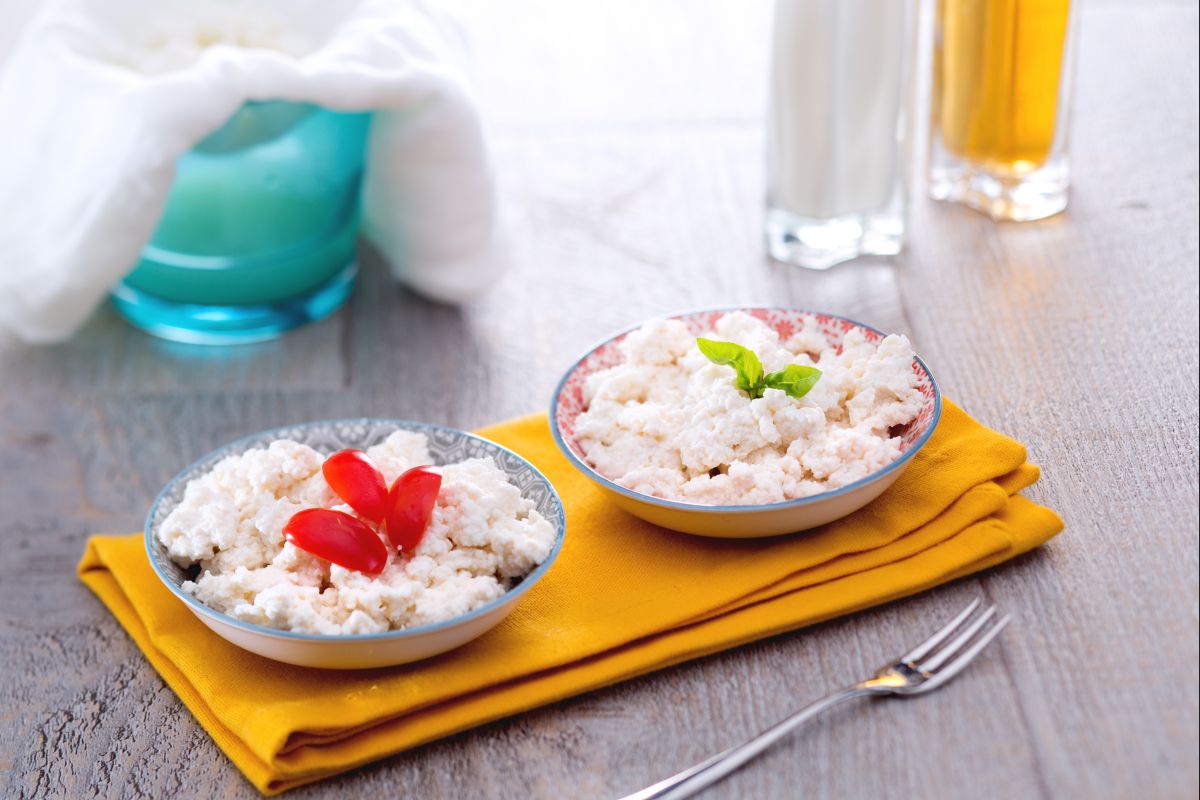Cottage cheese

- Gluten Free
- Vegetarian
- Energy Kcal 93
- Carbohydrates g 13
- of which sugars g 13
- Protein g 9.2
- Fats g 0.5
- of which saturated fat g 0.36
- Cholesterol mg 5
- Sodium mg 711
- Difficulty: Easy
- Prep time: 10 min
- Cook time: 30 min
- Serving: 4
- Cost: Low
- Note plus 1 hour of resting time
PRESENTATION
Cottage cheese, or fiocchi di latte as it’s called in Italy, is a total favorite at many tables. Why? Because of its light and tender texture. Seriously good. Those little white spheres have this slightly moist and tangy flavor—just enough to perk up any dish. In Italy, fiocchi di latte stands right there with other fresh cheeses like ricotta or primo sale. It’s unique because it's made with skim milk and vegetable rennet, which is great for vegetarians and those looking for lighter options.
When folks talk about cottage cheese recipes or healthy cottage cheese dishes, this is exactly what they mean—a cheese that's pretty simple to make at home and goes with just about anything. And you know what? You don’t need fancy tools or even a thermometer. It’s all about timing. For real. Across different regions in Italy, you’ll find small tweaks here and there, but the result is always somewhere between creamy and mild, with a fresh taste that pairs well with both sweet and savory foods.
Some folks spoon fiocchi di latte over warm pasta. And look, others mix it into salads with roasted veggies, or even top it onto a slice of bread for a quick snack. When you think about easy cottage cheese meals, this homemade version fits the bill, whether you need high-protein cottage cheese snacks in the afternoon or a quick cottage cheese breakfast that feels light yet filling. People really, really appreciate its straightforward golden look and how it makes healthy eating a bit more enjoyable without extra work.
You get the benefits of cottage cheese—like good protein and low fat—with a flavor that feels homemade and totally natural. That’s what makes Italian fiocchi di latte such a classic in the world of cottage cheese nutrition and a staple in kitchens wanting a fresh, simple cheese on hand. Its versatility and ease of preparation—no question—keep it a beloved choice for many looking to enjoy the easy joys of Italian cheese-making. Cannot go wrong.
You might also like:
- INGREDIENTS
- Ingredients for about 7 oz
- Skim milk 4 ¼ cups (1 l)
- Fine salt 1 tsp (6 g)
- White wine vinegar 3 ½ tsp (17 g)
How to prepare Cottage cheese

To prepare cottage cheese, pour the milk into a pot 1, add the salt 2, and cook over medium heat for 15 minutes, stirring occasionally to prevent a film from forming on the surface 3.

When the milk reaches a boil, turn off the heat and add the vinegar 4, stir for thirty seconds, and then cover the pot with a lid 5, letting it rest for 30 minutes. Bring the mixture back to a boil, this time on high heat, stirring often: it will take about 10 minutes, and you will notice the milk coagulating 6.

Turn off the heat and cover the pot again with the lid, allowing it to rest for another 30 minutes 7. With a ladle, collect the cottage cheese 8 and place it in a container where you have placed sterile gauze or a tightly woven linen towel 9.

Let it drain and then squeeze the gauze to remove the excess liquid 10. If you find that the mixture is too dry, add a few tablespoons of whey 11 and finally serve the cottage cheese in small bowls garnished, for example, with basil or cherry tomatoes 12.